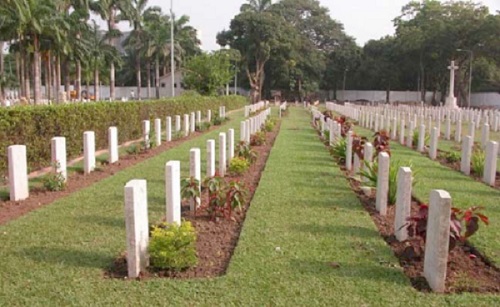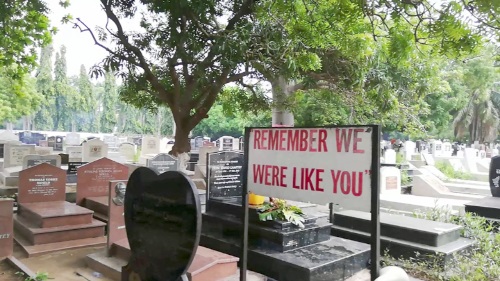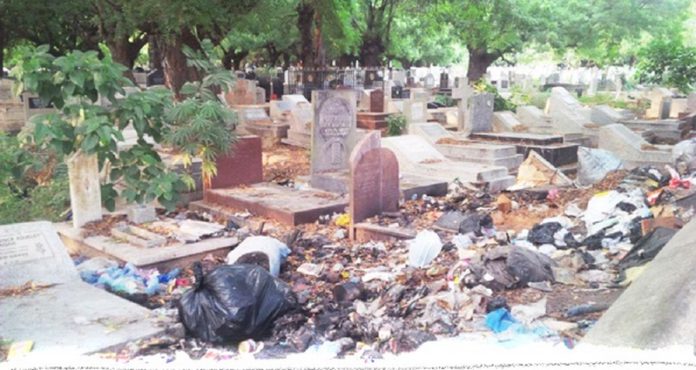My firm had the privilege to design a Private Family Cemetery on the outskirts of Old Tafo-Akyem in the Eastern Region.
This cemetery is where the mortal remains of the late Joseph Boakye Dankwa-Adu, a former Member of Parliament (MP) for the Abuakwa North Constituency, was laid to rest.
It is now known as the Janet Anima Acheampong Graveyard.
It was an emotional project. J.B., as he was affectionately called, had his life snuffed out at 51.
We had lost a friend and a mentor who was full of life and presence.
Ghana lost a fine politician who paraded the corridors of power, Parliament and his constituency.
As we rolled out the project, we seem to be clutching at straws; trying to dignify what was left of J.B. This kind of pain is universal.
The Taj Mahal in Agra, India, was built by the 5th Mughal Emperor, Shah Jahan, in the 17th century in white marble.
This world acclaimed mausoleum was built to house the tomb of his favourite wife.
The height of this tomb is 73 meters (approximately 24-storeys in height).
Eventually, the emperor was also buried beside his wife.
The expression of pain beyond emotions finds expression in epitaphs, cenotaphs or a simple headstone.
Memorials are built to help show our grief and are the final eulogy for treasured and respected ones we lose.

So, along the same vein, the family of J.B. birthed a private cemetery.
But why would the family not simply bury the former MP in the public cemetery?
The family, maybe, avoided a public cemetery burial which is often poorly managed.
The filth and overgrown weeds in many public cemeteries are worrying.
Worse of all, the graves have very short tenure; worse in Osu or Awudome Cemetery.
History, architecture cemeteries
Cemetery is from the Greek word that translates as “sleeping place”.
Cemeteries were designed as far back as in the mid-19th century.
John Loudon, an Urban Planner, was known to have designed three cemeteries and authored his book On the Laying Out, Planting and Managing of Cemeteries which was published in 1843 (Wikipedia).
Historically, one of the strangest observations with cemeteries were the Cemetery Bell and a Cemetery Guard.
Historically, it is believed that many people were presumed dead and buried. Some may have been in coma and buried.
It is believed that a few regained consciousness and would have been buried alive.
In order to prevent such occurrences, the corpses’ hands were tied with ropes connected to the cemetery bells so that any movement in the coffin would result in the bell ringing. The cemetery guards could rush to the rescue. It is believed this was the origin of the phrase “saved by the bell” and graveyard shift.
Cemeteries in Ghana

In Ghana, the colonialists imposed the creation of cemeteries in Accra in the Gold Coast era in 1888 (Sarah Balakrishnan). Before then, it is believed that many of the burials were done in homes along with the performance of some traditional rites.
The colonialists allowed these traditions to take place in the cemeteries after this order.
Traditionally, in the Akan communities, there are different cemeteries for the commons and the royals.
The royals are buried in “eban mu” (literally, the fenced area).
That defined the exclusivity of the designated area for burial for the royals.
The designated chiefs for last offices are the Baamuhene and Diawuohene.
Additionally, in Akan communities, the Dasohene is responsible for the graves in the townships.
So, in terms of traditional oversight of burial grounds, this was at the core of our governance architecture.
Most of the cemeteries were located on the outskirts of settlements.
The cemeteries were often heavily foliaged patches with graves in shades of trees.
The headstones and the various ornamentations that come with it usually tell of the social standing of the lost loved one.
We can draw some conclusions from this that culturally the preservation of places of burial is culturally engraved in many ethnic groups and not alien to us as Ghanaians at all.
So why have our public cemeteries become neglected and in squalor?
Graveyard economy
It is unbelievable how much is spent to give a decent burial in Ghana.
The whole exercise is froth with emotions.
From preparation of death certificates to grave diggers and signwriters for temporary marking of the grave is astonishingly almost an extortion process.
From a cursory look at headstones in Ghana 20 years ago, a lot of the graves were in granu-finish and terrazzo.
The shift is now towards granite, which is more expensive, looks better and durable. It is also inert.
Within the vicinity of cemeteries, sale of wreaths has also become good business. In places like the Osu Cemetery, there are all these guys there, claiming to ensure that graves of loved ones are protected.
A completely needless vocation if we had the structured management of cemeteries.
Is health of public cemeteries important?
The surge in the development of private public cemeteries that is decently run and kempt is simply a niche need that the private sector is taking advantage of.
The Public Health Act, 2012 (Act 851) is very broad on Public Health issues.
It simply tells the weight and breath of responsibility of our Public Health Departments at the various MMDAs.
The Act lacks specifics of direction for the management of cemeteries.
It is, therefore, not surprising that our cemeteries are poorly managed.
The chaotic nature of graves in many public cemeteries is undeserving of the emotions and sentiments connected with the people we lose.
Cemeteries have also become the den of deviant behaviour especially in the urban areas.
Osu and Awudome Cemetery lead the charge here.
Osu and Awudome cemeteries sit on approximately 25 and 74 acres, respectively.
It is now common place that if you do not often visit the grave of loved ones and even pay those boys in the cemeteries, it is quickly dug up and sold out for another burial.
Recently, it surprisingly came to my knowledge that if you have a grave of a family member, another member could be buried on top of the previous grave. Shocking!
Grave-digging comes with serious health hazards. Decomposing human bodies release quite a bit of pathogenic bacteria, fungi, protozoa, and viruses, which are harmful and unhealthy.
Bodies also release toxic chemicals associated with embalming, such as, arsenic, formaldehyde, and mercury.
So, such grave-digging practices need to be stopped immediately by the Public Health authourities.
The Osu and Awudome cemeteries should be closed down before they become a public health problem.
Location,
public health
Again, the burial process is a subterranean activity.
In areas where water tables are shallow or on banks of rivers there are the dangers of arsenic, formaldehyde, and mercury seeping into ground water.
These preservative chemicals are dangerous if ingested.
In Ghana, due to the infrequent supply of water, boreholes are dug to supplement water supply.
Such boreholes close to cemeteries would have to be tested specifically for the presences of traces of such chemicals.
Also in Ghana, boreholes are dug without specific permission from Water Resources Commission of Ghana which should have their authority broadened to reserve the right to grant access to the exploration of ground water near cemeteries.
The Commission would have to coordinate their activities with the various MMDAs and jointly review such land uses.
Time to consider:
Different disposal of bodies
The common legal methods of disposal of corpses are ground burial and cremation.
Cremation seems to be gathering some interest in Ghana.
There are other forms of legally accepted disposal methods that need to be discussed.
We have to consider land use, our beliefs; culturally and religiously, modernity and how we could have closure even as we embrace new ways.
They include the donation of bodies for research, immurement, dissolution, and composting.
The role of faith-based organisations would be key in these discussions.
A question that is frequently asked is that if Lazarus’ body were cremated, how would Jesus have resurrected him?
And if the body of Christ were cremated or dissolved, His resurrection, which is the basis of the Christian faith, could have been undermined.
That sums up the belief in the preservation of the bodies of the dead with the Abrahamic religions.
The conversation should extend to passing laws that would ensure that cemeteries become places that are dignified enough for human disposal.
For now, the rich and wealthy are finding their own solutions as they do when the system fails.
But, when will the state actors rise up to the occasion and make their effort count?
Before Asomdwoe Park, where the late President John Attah-Mills is buried was rehabilitated recently, it was in poor state.
The public should keep an eye on how it does with maintenance after five years.
The Military Cemetery at Osu is beautiful.
The graves are marked with simple uniform white headstones and the rows are done with military precision.
When it was full, they quickly relocated. They will continue to manage their cemeteries properly as an internal culture for the respect they have for fallen soldiers.
The public side of the Osu Cemetery coexisted side by side and none of this military tradition was transferred to the management of it, which is a shame…. our final resting place in filth!
It is time to have clean, decent and orderly final resting places in Ghana.
God bless our homeland Ghana and make it strong and clean.
The writer is an architect.

